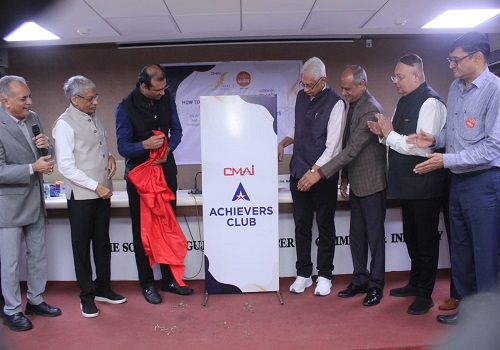Navikenz, a differentiated Artificial Intelligence focused services company raises $4M in seed funding

Follow us Now on Telegram ! Get daily 10 - 12 important updates on Business, Finance and Investment. Join our Telegram Channel
Navikenz, a consulting-led Artificial Intelligence (AI) services company, raised $4M in seed funding from several HNIs led by Sudip Nandy, ex-CEO Aricent and Sekar PRC ex-CEO Hexaware.
The investment comes at a time when the firm is aiming to expand and further strengthen its position in the industry.
Founded in 2021 by IT Industry veteran Anjan Lahiri, Navikenz is helping enterprises discover and implement AI enabled solutions to improve business processes and supplant 'human effort with human intuition.' The founding team also comprises Samit Deb, Balaji Krishnan, Megha Jain and Gurudatta Kamath. These industry experts bring an average experience of more than 25 years and hunger to 'build the future again'.
With this investment, Navikenz will expand its footprints in India and the United States. The company has already done one round of campus hiring and is planning to hire a team of 100 high-end technology professionals across India and the US, comprising Enterprise Architects, Data Architects, Data Scientists and Machine Learning Engineers.
Commenting on the development, Mr Anjan Lahiri, Co-founder & CEO, Navikenz, said: "No company needs another line of code they need higher revenues and lower costs. Technology enables them to do that. People do not need employment, they need employability and a purpose a reason to come to work every day. Our aim at Navikenz is to give people this sense of purpose, solving problems for customers in a way that makes them leap to log into their computers every day."
Operational for only a few quarters, Navikenz already has multiple clientele based in the US and India. In the next five years, the company aims to become a significant player in the IT Services space. With a management team that can easily handle businesses worth more than a billion dollars, it will look at organic and inorganic means of achieving the scale required to serve the needs of its Fortune 500 target customers.
"In today's world, the competitive weapon is your culture and your ability to attract and retain the talent. We are targeting to pioneer as many post-Covid practices as possible, making us a preferred destination for the best talent in the industry," said Samit Deb, Co-founder & Chief of People Success, Navikenz.
Since 2021, Navikenz is engaging Fortune 500 companies, helping them in recognising the strengths of its AI-based solutions, such as Business Process Consulting, Enterprise Architecture, Cloud, and Data Science capabilities. With its differentiated Consulting and Enterprise Architecture methodology, Navikenz has emerged as the most suitable partner for companies that are looking to determine how they can change their organisations with modern technologies.
AI is set to dramatically change the way industries across various platforms function. However, it is yet to be determined to what extent this change would be. Findings from the 2021 McKinsey survey indicate that AI adoption is continuing its steady rise: 56 per cent of all respondents report AI adoption in at least one function, up from 50 per cent in 2020. The newest results suggest that AI adoption since last year has increased most at companies headquartered in emerging economies, which includes China, the Middle East and North Africa. And across regions, the adoption rate is highest at Indian companies, followed closely by those in Asia Pacific.
In today's world, every business, organisation, and global firm is investing heavily in modern technologies to meet the changing requirements of not only the industry but also their targeted customers. Navikenz believes that the key is determining the 'Business Change, and hence it will lead with 'Business Consulting' and 'Enterprise Architecture' capabilities in this exciting future.












 320-x-100_uti_gold.jpg" alt="Advertisement">
320-x-100_uti_gold.jpg" alt="Advertisement">












